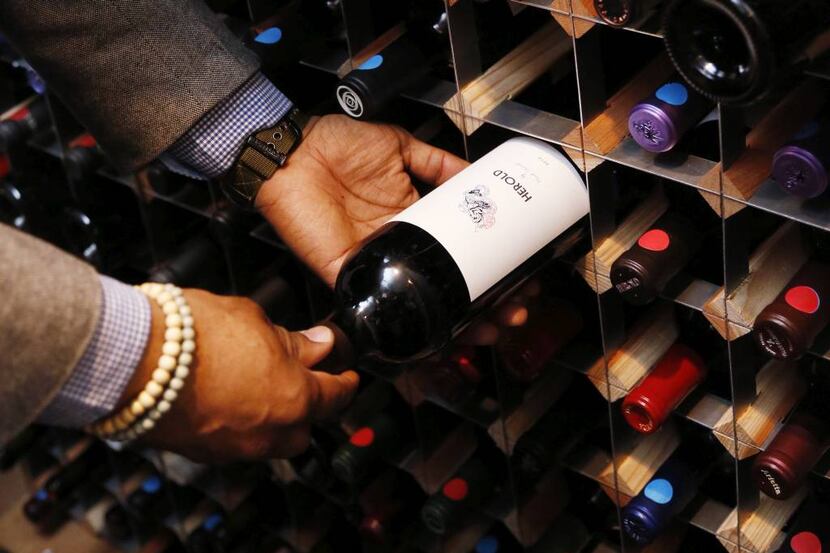At home you drink wine regularly and maybe even have a cellar with a few cases or a few hundred. You've gotten past the stage when a wine list looks like it's written in Sanskrit and the prospect of ordering a bottle in front of friends or colleagues makes you break out in a sweat. But now you want more: You want to be able to quickly sleuth out the best values on any list and also get the most out of a quick chat with the sommelier or the restaurant's wine buyer. In short, you want to maximize your restaurant wine experience. Here are some quick tips for doing just that.
Tim Gaiser is a master sommelier and wine-industry consultant, writer, researcher and educator. He's based in San Francisco, where he lives with his wife and son.
Fast-tracking a Wine List for Value
Wine lists run the gamut of length, from half-page fragments to Bible-size tomes. Take these three steps to find the best values on lists of any length:
1. First, take the highest and the lowest prices and drag them to your mental trash bin. Then make a quick estimation of the average list price, which could be anywhere between $40 and $150, depending on the type of restaurant. Know that there's a huge difference between a neighborhood bistro and the Mansion or Fearing's in terms of the cost of operations, staffing and the rest. You might also be mindful of the fact that most restaurants do not make money by selling food alone; they survive and hope to thrive by selling alcoholic beverages.
2. Find the sweet spot, which is 50 to 60 percent of the average list price. In other words, if you've calculated that the average price for a bottle is $50, your sweet spot would be $25 to $30. The sweet spot is usually where the best values are.
3. Focus on less-known varieties or regions. The odds of finding an outrageous value in Napa cabernet are slim to none, for many reasons - most of which have to do with the cost of vineyard property, production or winery infrastructure. But if cabernet is a must (no pun intended), look beyond major production areas like Napa to places such as Coonawarra in South Australia or Stellenbosch in South Africa. Both make pure cabernet wines and cabernet blends that are outstanding and sell for a fraction of the price of a similar Napa offering. Also be willing to look beyond the cabernet-chardonnay universe for different varieties from lesser-known regions.
The Latest and Greatest
In the last decade, the wine world has evolved more than it did in the entire preceding century - and it continues to move at an amazing pace. The most prestigious wines from many historically important regions, such as Bordeaux and Burgundy, have largely priced themselves out of the reach of the average wine lover. The good news is that there never have been more options for the wine-savvy diner, simply because countries and regions that weren't even on the radar 15 years ago are now not only mainstream, but also producing superb wines.
Here are suggestions for sparkling, white and red wines from around the globe with a high quality-to-value ratio:
Sparkling Wines
Look for prestige cuvée Champagne quality for less from Franciacorta in Italy's Lombardy region; Crémant de Limoux in Southwest France offers exceptional sparkling values, as well. And do consider the fine sparkling wines from Gruet in New Mexico, my home state.
White Wines
From the Alto Adige region of Northern Italy, seek out steely pinot bianco, pinot grigio (Italy's best) and white blends. Campania's Greco di Tufo and Fiano di Avellino are ancient indigenous grapes that make for delicious aromatic white wines. Beyond Italy, look for dry furmint from Hungary and albariño and verdejo from Spain. Grüner Veltliner has become Austria's most important white, while dry, steely sémillons from the Hunter Valley in Australia's New South Wales are largely unknown, and underpriced. Meanwhile, if you happen to spot assyrtiko from Santorini, Greece, grab it - it's an exceptional value; Domaine Sigalas is a top producer. Finally, closer to home, look for the outstanding dry rieslings from New York's Finger Lakes region.
Reds
Many of my favorite go-to value reds are from Italy, whether Piedmont's delicious and versatile barberas or Sicily's savory, rich nero d'Avolas. From Spain, be on the lookout for savory garnacha (grenache) blends from Castilla-La Mancha and monastrell (mourvèdre) from Jumilla in the south. The Australians have mastered the art of comfort food wine, and their GSMs - short for the blend of grenache, shiraz and mourvèdre - are not only the Aussie equivalent of Southern Rhône blends like Châteauneuf-du-Pape and Gigondas, but also great values.
Three Magic Questions for the Sommelier
The larger the wine list, the more a diner needs help from a sommelier or wine buyer. However, once you get one tableside, he or she will probably have a very narrow window of time to talk about the list or make a recommendation - especially on a hectic weekend night. Knowing what to ask is critical. If in doubt, ask one of the following three magic questions below. All are practically guaranteed to help zero in on a great bottle even if the list has hundreds - or thousands - of entries.
"What are your favorite values on the list?"
"Is there anything you've just gotten in that you really like and consider a must-try?"
"Is there anything you're pouring by the glass that you really like and think is a great value?"
Read more from Palate magazine, publishing with The Dallas Morning News print editions on March 8.

